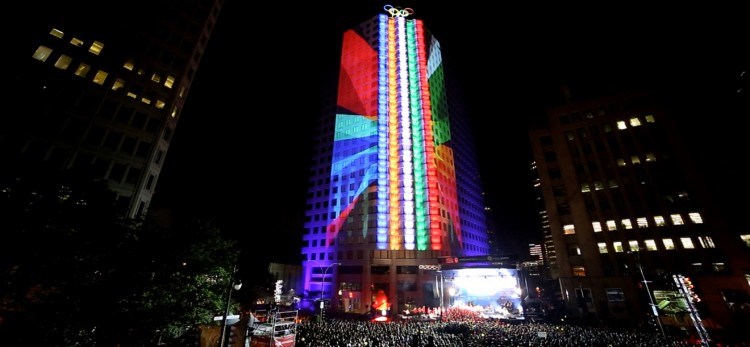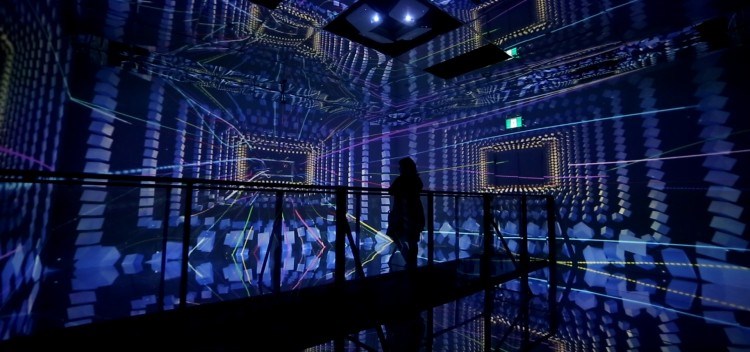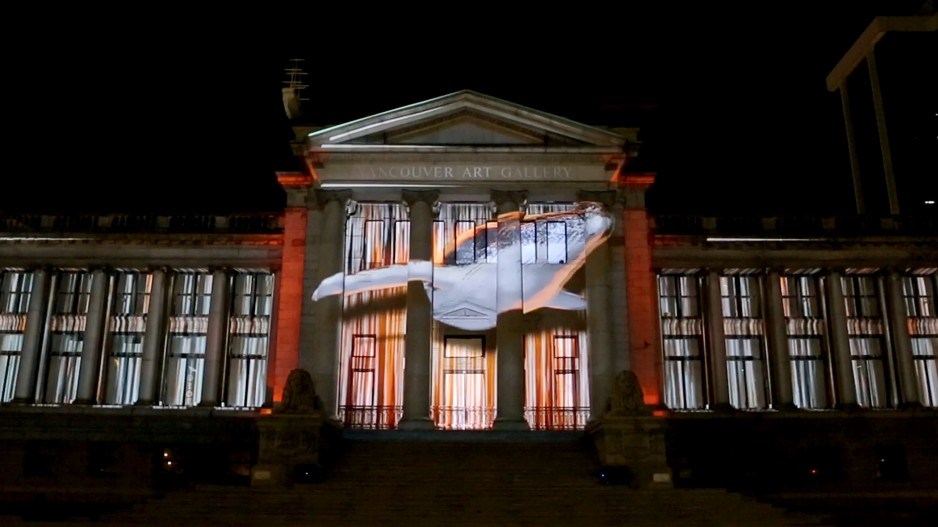Projection-mapping technology is wowing audiences and providing an impressive return on investment in the form of publicity, engagement and social shares.
If you have ever been to a hockey game and watched the rink turn into a lake of fire or witnessed a building morph into an entirely different shape, then you have witnessed projection mapping in all its awe-inspiring glory. Instead of projecting onto a traditional flat screen, the image or design is mapped to irregular surfaces and objects, making for an incredible visual experience. Top projection-mapping companies are now incorporating cinema-style narratives through their content – and the messages they convey have a huge impact.
How projection mapping has evolved
With projection mapping, you can create any sort of ambience you like. An ordinary room can be turned into a spaceship or parts of the facade of a cathedral can be made to disappear. It’s a new precedent in lighting, marketing and entertainment. And as 3D mapping is getting more advanced, marketers are using it in innovative ways.
For the Game of Thrones Season 7 premiere party, projection designer Bart Kresa mapped the Walt Disney Concert Hall with jaw-dropping imagery and scenes from the blockbuster TV series. Attendees saw Westeros come to life on the building before them.
To bring art to the public in a new, dynamic and accessible format, the Burrard Arts Foundation in Vancouver started Façade Festival, an annual art and projection-mapping festival. In 2017, the festival had the works of 10 local artists projected onto the Vancouver Art Gallery building with the help of Go2 Productions’ projection-mapping specialists. Inspired by huge visual arts festivals like Sydney’s Vivid, the monumental projections provided viewers with a unique experience of visual art within the public realm.
An increasing number of sports arenas are using on-court projection mapping to display player stats, accompany halftime entertainment and increase fan engagement. For a Canucks game in Vancouver, Adrian Scott and his team at Go2 Productions produced a one-of-a-kind, West Coast-themed arena-wide projection-mapping experience. The company not only made use of the ice surface, but also took control of the 360-degree LED strip, the Jumbotron screens and four huge vertical banners that hang on each corner of the ice.
The increase in the popularity of public city-sponsored events is driving a higher demand for projection-mapping shows. For the Canada Olympic Excellence Day celebration in Montreal in 2015, an incredible 18-minute projection-mapping experience was created leading up to the unveiling of the Olympic rings on the roof of the Canada Olympic Committee’s (COC) 23-storey headquarters. Said Scott, “Rendering 18 minutes of content at 5x HD vertical resolution takes a lot of CPU power and a lot of organization. But the COC – and the public – were ecstatic with the outcome.”
For this year’s Winter Olympic opening ceremony, Panasonic pulled off a projection-mapping spectacle mixed with elements of augmented reality as well.

Go2 Productions created 18 minutes of content to be projected onto a 23-storey building for the 2015 Canada Olympic Excellence Day celebrations
Temporary immersive art installations that use projection mapping are a huge draw for events and conferences. Mirage at Metropolis was a 360-degree immersive audiovisual experience, just like a holodeck, that saw over 1,000 attendees per day. Using colourful 3D motion graphics and inspired by the Tardis from Doctor Who, the 20-by-20-foot room had attendees blown away by its magical infinity effect. Scott explained, “ I think that there’s a big interest in creating activations like Mirage. For something so big and impressive, I think that it would surprise people to know how easy it is to run. We are rolling out a similar experience called Infiniqube, where by making use of stereoscopic cinema projection techniques, we can put your guests anywhere in the universe and have them be completely immersed in the experience.”

Mirage was an immersive art installation that used 3D motion graphics and expansive transformations to give the illusion that it was much bigger on the inside
What’s next
The technology now exists to project onto items that move, and we’re already at a stage where it’s able to identify multiple targets and project different designs on each one.
Interactivity has also come into play. Projected images can be manipulated by touch or movement. This experience would be similar to virtual reality but without needing any bulky gear or goggles.
For Scott, it’s all about inspiring the audience: “What we’re trying to do is move more into an interactive entertainment realm, where the show and experience is everything. That’s gotten a little lost in recent years. It should be more about the experience, and wanting people to go back and re-experience it again. The technology coming out now is really making it an exciting time in that space.”
From 3D projection mapping to immersive environments, video and experiential projects, Go2 Productions is focused on creatively using art and technology to design unforgettable experiences. For more information, visit www.go2productions.com.




